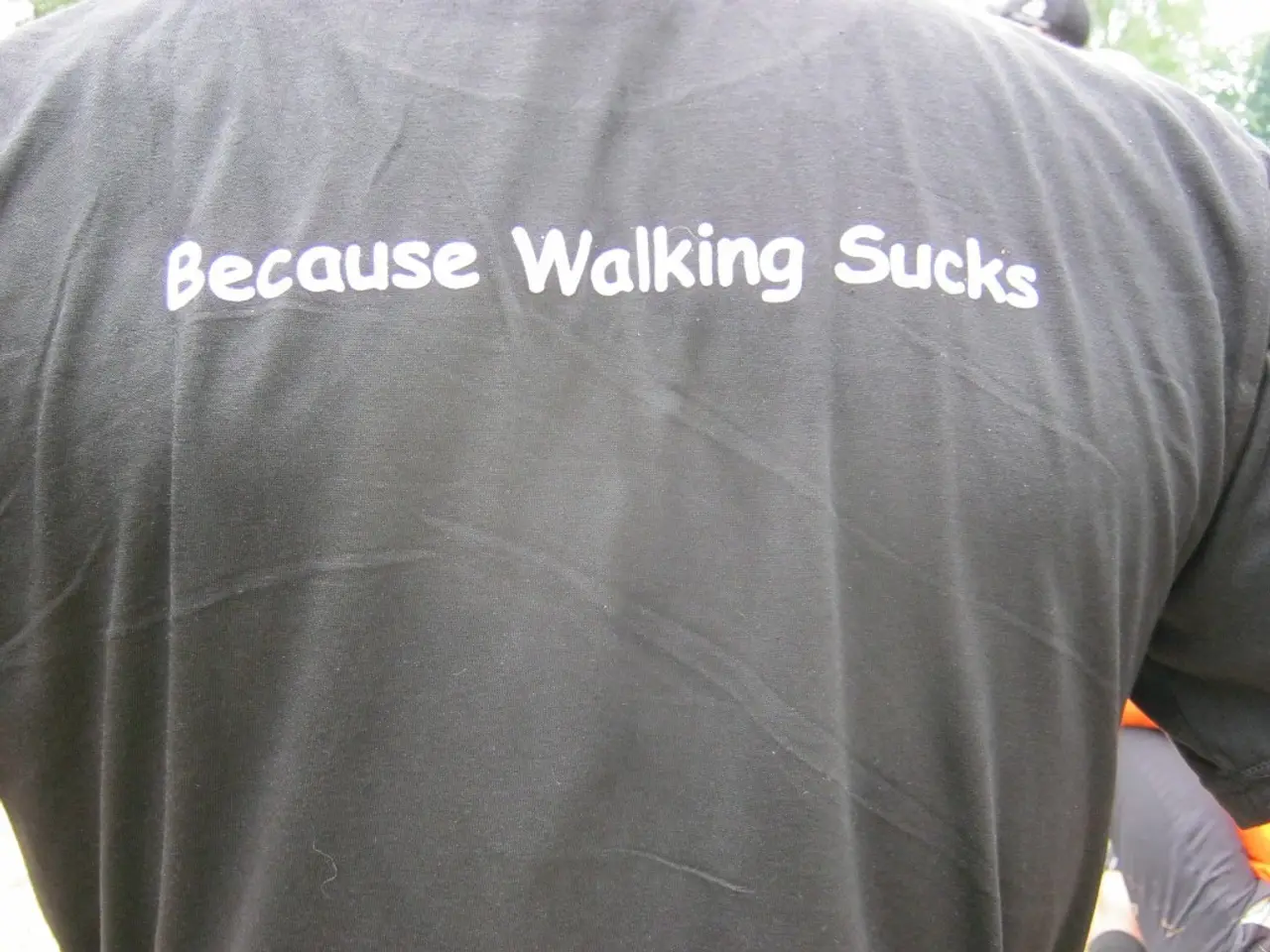Comparing Walking and Running: Elements of Weight Loss, Cardiovascular Health, and Additional Factors
In the ongoing debate between running and walking for weight loss and improved health, both exercises have their unique benefits.
Both activities offer numerous advantages, including maintaining a moderate weight, improving heart health, mental health, and more. When it comes to reducing belly fat and managing obesity, regular aerobic exercises, such as walking, have been found to be particularly effective.
However, running is generally more effective than walking for burning calories and reducing belly fat, given its intensity and duration. A person who is 160 pounds burns approximately 15.1 calories per minute while running, compared to 8.7 calories per minute while walking. This means that running can burn substantially more calories in the same amount of time (453 vs. 261 calories in 30 minutes).
Running also triggers stronger hormonal responses, like adrenaline and norepinephrine, which promote fat release from fat cells and produce an afterburn effect, meaning your body continues burning calories after exercise ends.
On the other hand, walking at a brisk pace maintains a moderate intensity level, burning a higher percentage of fat as fuel during the activity itself compared to jogging or running. Walking also preserves muscle better, especially when combined with strength exercises, which supports a healthy metabolism and sustainable fat loss over time.
It's important to note that neither walking nor running can specifically target belly fat alone; instead, both exercises reduce overall body fat, including fat in the belly area.
In summary, running is more effective for quicker calorie burning and reducing belly fat per unit of time and intensity, but brisk walking can be a sustainable, fat-preserving, and enjoyable option for longer durations, especially for those who prefer moderate intensity or are new to exercise.
Choosing between them depends on your fitness level, goals, and how consistently you can maintain the exercise over time. It is not directly proven that either walking or running offers a specific advantage for reducing belly fat.
For runners, it is crucial to take steps to reduce the risk of running-related injuries, including fractures, soft tissue injuries, and shin splints. Brisk walking at least 150 minutes per week is associated with a lower risk of heart disease, diabetes, high blood pressure, and high cholesterol.
Walking is a suitable choice for those starting a fitness journey due to its low or moderate intensity. Scientists need to perform more research comparing the effects of walking and running on belly fat reduction. People with arthritis, heart disease, or other chronic health conditions should consult their doctor before starting a running program.
[1] American Heart Association. (2021). Walking: Trim your waistline, improve your health. [online] Available at: https://www.heart.org/en/healthy-living/fitness/walking/walking-trim-your-waistline-improve-your-health
[2] Mayo Clinic. (2020). Walking: Trim, tone, and firm your body. [online] Available at: https://www.mayoclinic.org/healthy-lifestyle/fitness/in-depth/walking/art-20046261
[3] Harvard Health Publishing. (2021). The truth about running and weight loss. [online] Available at: https://www.health.harvard.edu/staying-healthy/the-truth-about-running-and-weight-loss
- In the debate surrounding weight loss and health, running and walking each offer distinct benefits for mental health, heart health, and a variety of other medical-conditions.
- Walking, at a brisk pace, can be an effective tool for reducing belly fat and managing obesity when practiced regularly as an aerobic exercise.
- Running, however, tends to burn more calories per minute and induces stronger hormonal responses that aid in fat release and post-exercise calorie burning.
- Walking, contrary to running, burns a higher percentage of fat as fuel during the activity and is gentler on muscles, especially when combined with strength exercises.
- Neither running nor walking directly target belly fat; instead, both exercises aid in reducing overall body fat, which includes the belly area.
- Ultimately, the choice between running and walking depends on one's fitness level, goals, and consistency in maintaining the exercise long-term.
- Runners should take precautions to minimize injury risks, such as fractures, soft tissue injuries, and shin splints.
- Walking for at least 150 minutes per week has been linked to a lower risk of heart disease, diabetes, high blood pressure, and high cholesterol.
- For beginners starting their fitness journey, walking, due to its low or moderate intensity, can be a suitable way to enter into health-and-wellness, fitness-and-exercise, and weight-management.
- Studies should compare the effects of walking and running on belly fat reduction more extensively in the field of science.
- Individuals with arthritis, heart disease, or other chronic health conditions are advised to consult a medical professional before starting a running program (as referenced in sources [1], [2], and [3]).




